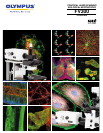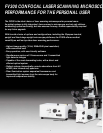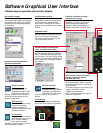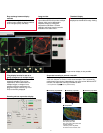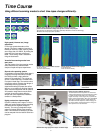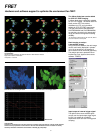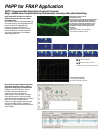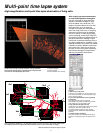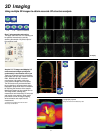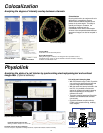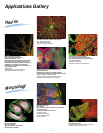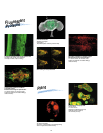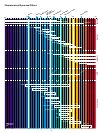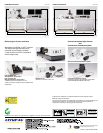
6
The 440nm diode laser can be added
for CFP/YFP FRET imaging.
A 440nm diode laser is optionally available
for CFP/YFP imaging. The 440nm laser line
ideally excites CFP, with minimal
disturbance to YFP, and is therefore
suitable for CFP/YFP FRET experiments.
The high performance LSM objectives,
PLAPO40XWLSM and PLAPO60XWLSM,
are precisely corrected in this wavelength
range, and ensure the highest measuring
reliability.
*For simultaneous observation of CFP and YFP, 440nm
and 515nm laser lines are required.
Ratio imaging to analyze
2-wavelength images
Using time course software, the ratio image
can be continuously displayed in pseudo-
color. At the same time, the intensity of
each channel can be monitored graphically.
The analysis process is presented as an
intuitive flow chart. (optional time course
software: TIEMPO)
Hardware and software support to optimize the environment for FRET.
FRET
Input/output of external trigger signal
The optional time course software gives
control over the input/output trigger signal
by GUI. It is suitable for combined
experiments such as those involving patch
clamping.
CFP Fluorescence wavelength 485nm
Measurement
Ratio changes when cameleon is manifested on the HeLa cell and stimulated by histamine then inhibited by
cyproheptadine.
Cameleon genes provided by Dr. Miyawaki Atsushi in Brain Research Institute.
Equipment: FV300 and HeCd laser
Time period : 4 seconds.
YFP Fluorescence wavelength 530nm
CFP/YFP FRET
Calcium ion concentration in a live HeLa cell using a cameleon (split type) indicator. Energy transfer between
CFP and YFP is proportional to bound calcium. The time series shows the increase of calcium ion density
caused by stimulation of histamine and the effect of blocking by proheputajin.



